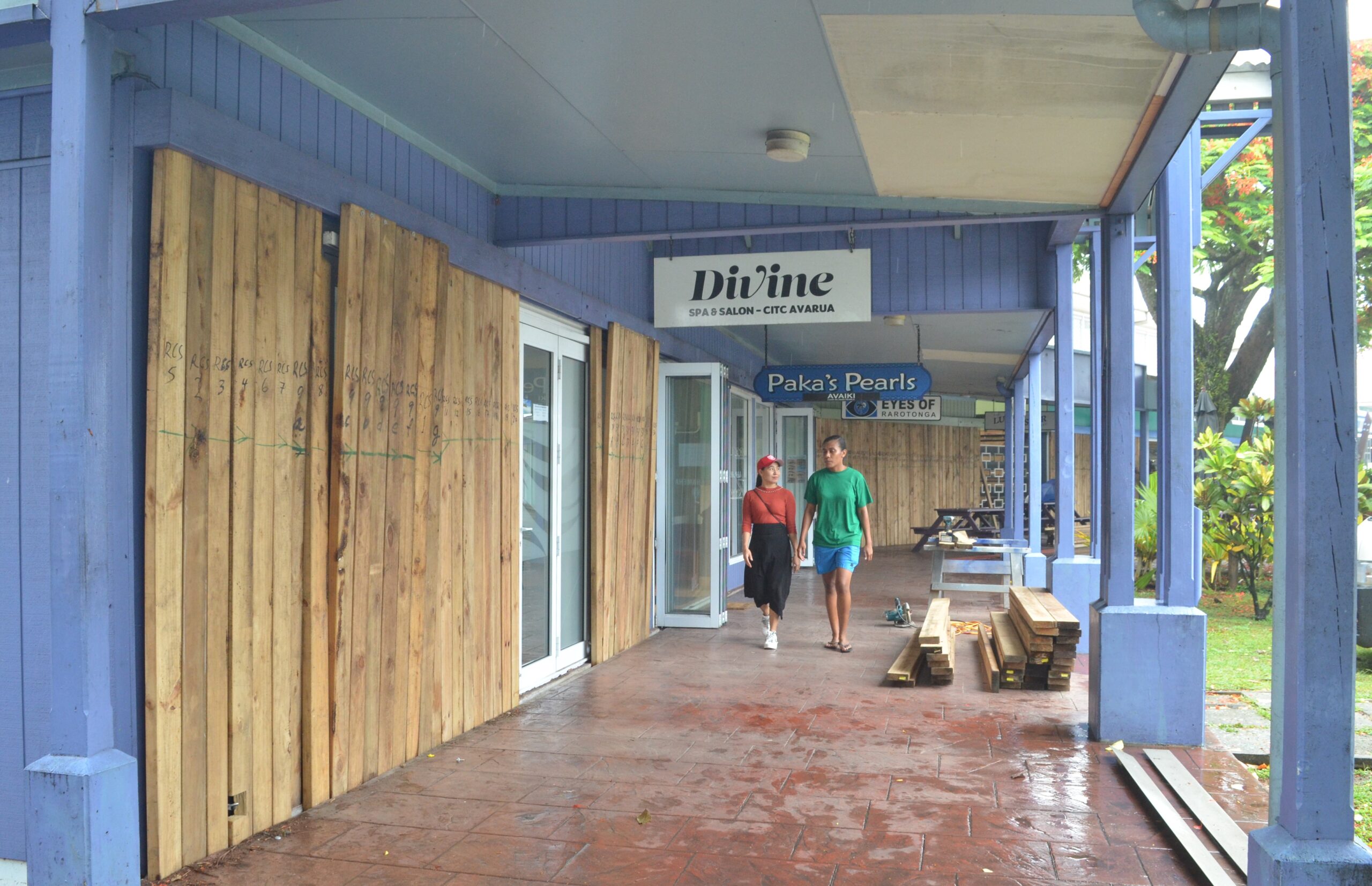Out-of-season threats – Met Office warns of continued weather effects
Thursday 2 May 2024 | Written by Losirene Lacanivalu | Published in National, Weather

Local businesses, particularly those in flood-prone areas, took precautions by installing cyclone shutters in anticipation of the adverse weather in February 2024. MELINA ETCHES/24021512
The Met Office is advising public to stay informed about weather forecasts even though the cyclone season is over, as cyclones can still form outside the season and out-of-season weather effects are expected.
Cook Islands Meteorological Services says it is important for the public to remain vigilant and keep updated with the weather broadcast as the 2023/24 cyclone season came to end this week.
The tropical cyclone season is from November 1 to April 30. Two to three named cyclones were forecast to pass through the Cook Islands in the 2023/24 season.
Weather office operational observer Bates Manea says cyclones can still occur out of season between May and October.
“Not indicating anything in the coming month, just stating that it has occurred before,” Manea said.
The peak of tropical cyclone activity in the Cook Islands is usually from December to February.
During the 2023/24 cyclone season, the Met Office issued Special Weather Bulletin warnings to the public on three different occasions.
Bates said two were named tropical cyclones that passed within Cook Islands EEZ (exclusive economic zone). They were Tropical Cyclone Nat and TC Osai. The third warning, issued in February this year, was for tropical depression TD10F, which most affected Rarotonga.
“Tropical cyclone season runs from November-April in the Cook Islands and the South Pacific. Out-of-season (May-October) tropical cyclone activity sometimes occurs as well,” Manea reiterated.
“Therefore, it is important that all communities remain vigilant and keep up-to-date with forecasts from the national meteorological services.”
Looking ahead, Manea explained that between May and July, the forecast favoured above normal rainfall in the northern Cook Islands.
Between May and October, air temperatures are favoured to be above normal for all Cook Islands, a continuation of recent anomalous warmth across the region. Also, stronger-than-normal easterly trade winds are favoured during the same period.
Manea said during this period coral bleaching alerts are in effect for the northern Cook Islands
He also said the 2023/24 El Niño event which began in the second to third quarter of 2023 is in decline.
However, the effects of this event may continue to be felt across the region for several more months.
Manea adds that several models suggest there is a chance of La Niña developing in the second half of this year, preceded by a period of ENSO (El Niño-Southern Oscillation) neutral conditions.
According to NIWA, El Niño and La Niña are opposite phases of a naturally occurring global climate cycle known as the El Niño Southern Oscillation. ENSO influences rainfall, temperature, and wind patterns around the world, including Cook Islands. El Niño and La Niña episodes occur on average every few years and last up to around a year or two.




















































